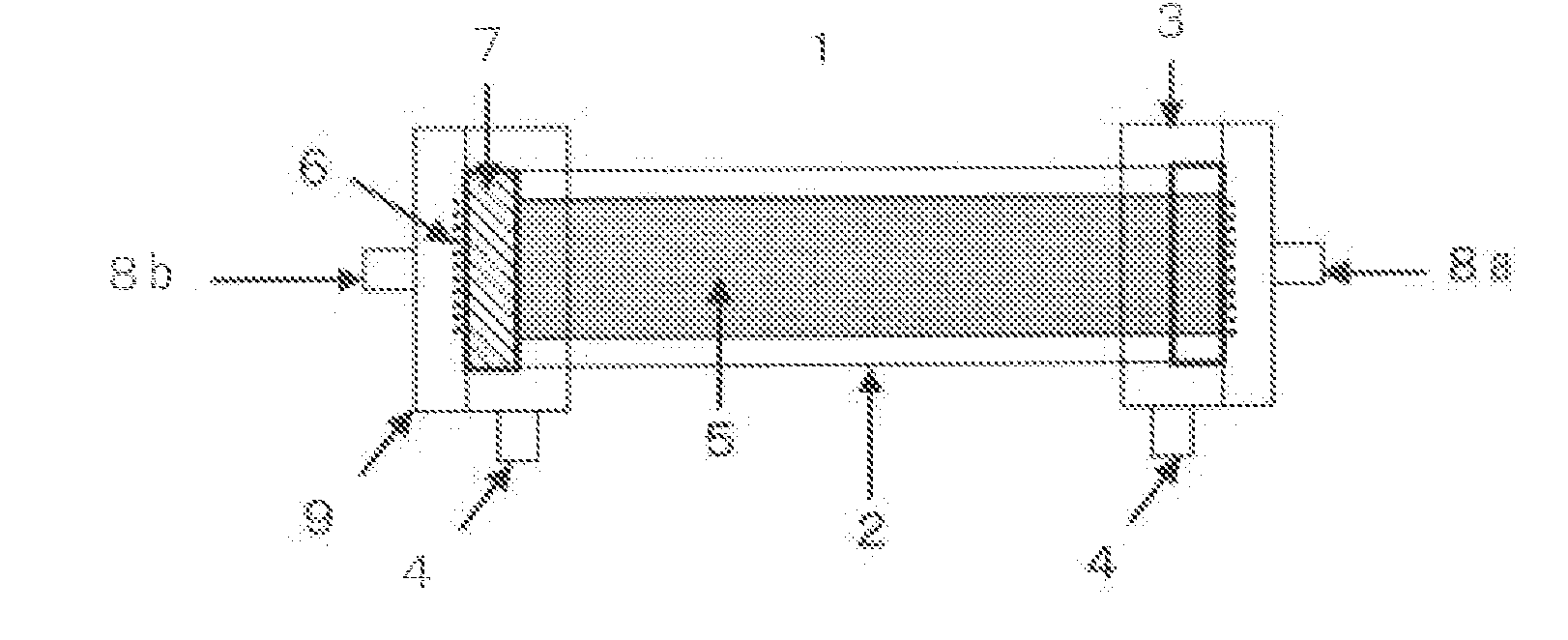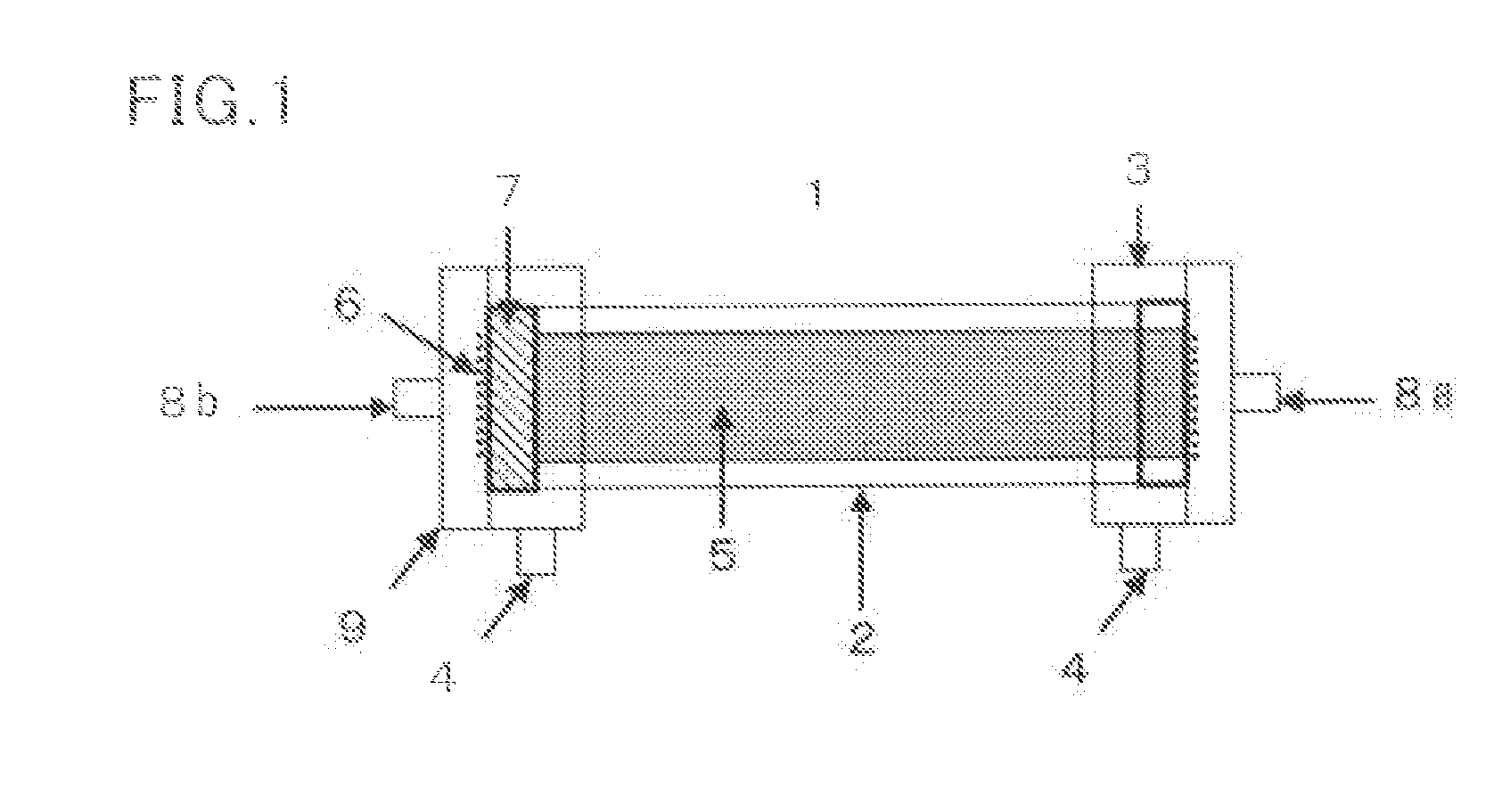Method for producing cell concentrate
a cell concentrate and cell technology, applied in the field of cell concentrate production, can solve the problems of reducing the number of cells in the process of preparing the concentrate, the inability to obtain enough cells from a living donor at a the inability to achieve sufficient cell concentration for treatment, etc., to achieve the effect of high cell recovery rate and short tim
- Summary
- Abstract
- Description
- Claims
- Application Information
AI Technical Summary
Benefits of technology
Problems solved by technology
Method used
Image
Examples
example 1
[0052]A cell suspension processing system was prepared using 250 hollow fiber separation membranes made of polyethersulfone [hollow fiber inner diameter: 570 μm, pore size: 0.2 μm]. The prepared processing system had an inside membrane area of 0.1 m2, and a total cross-sectional area of the hollow fiber separation membranes of 0.637 cm2. The cell suspension was passed through the system under the following conditions: flow rate into cell suspension inlet port: 460 mL / min (linear velocity: 722 cm / min); and initial filtrate flow rate from filtrate outlet port: 285 mL / min. The cell recovery rate and filtration time thus determined were 88% and 190 s, respectively.
example 2
[0053]The same separation membranes as those used in Example 1 were used. The number of hollow fibers used was 300, and the prepared processing system had an inside membrane area of 0.12 m2, and a total cross-sectional area of the hollow fiber separation membranes of 0.765 cm2. The cell suspension was passed through the system under the following conditions: flow rate into cell suspension inlet port: 420 mL / min (linear velocity: 549 cm / min); and initial filtrate flow rate from filtrate outlet port: 200 mL / min. The cell recovery rate and filtration time thus determined were 84% and 290 s, respectively.
example 3
[0054]The same cell suspension processing system as that of Example 2 was prepared. The cell suspension was passed through the system under the following conditions: flow rate into cell suspension inlet port: 640 mL / min (linear velocity: 837 cm / min); and initial filtrate flow rate from filtrate outlet port: 301 mL / min. The cell recovery rate and filtration time thus determined were 100% and 210 s, respectively.
PUM
| Property | Measurement | Unit |
|---|---|---|
| area | aaaaa | aaaaa |
| area | aaaaa | aaaaa |
| linear velocity | aaaaa | aaaaa |
Abstract
Description
Claims
Application Information
 Login to View More
Login to View More - R&D
- Intellectual Property
- Life Sciences
- Materials
- Tech Scout
- Unparalleled Data Quality
- Higher Quality Content
- 60% Fewer Hallucinations
Browse by: Latest US Patents, China's latest patents, Technical Efficacy Thesaurus, Application Domain, Technology Topic, Popular Technical Reports.
© 2025 PatSnap. All rights reserved.Legal|Privacy policy|Modern Slavery Act Transparency Statement|Sitemap|About US| Contact US: help@patsnap.com


